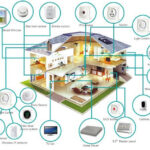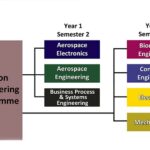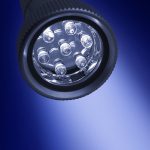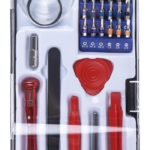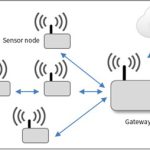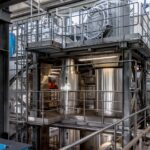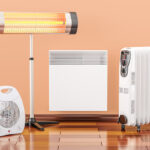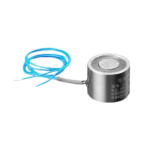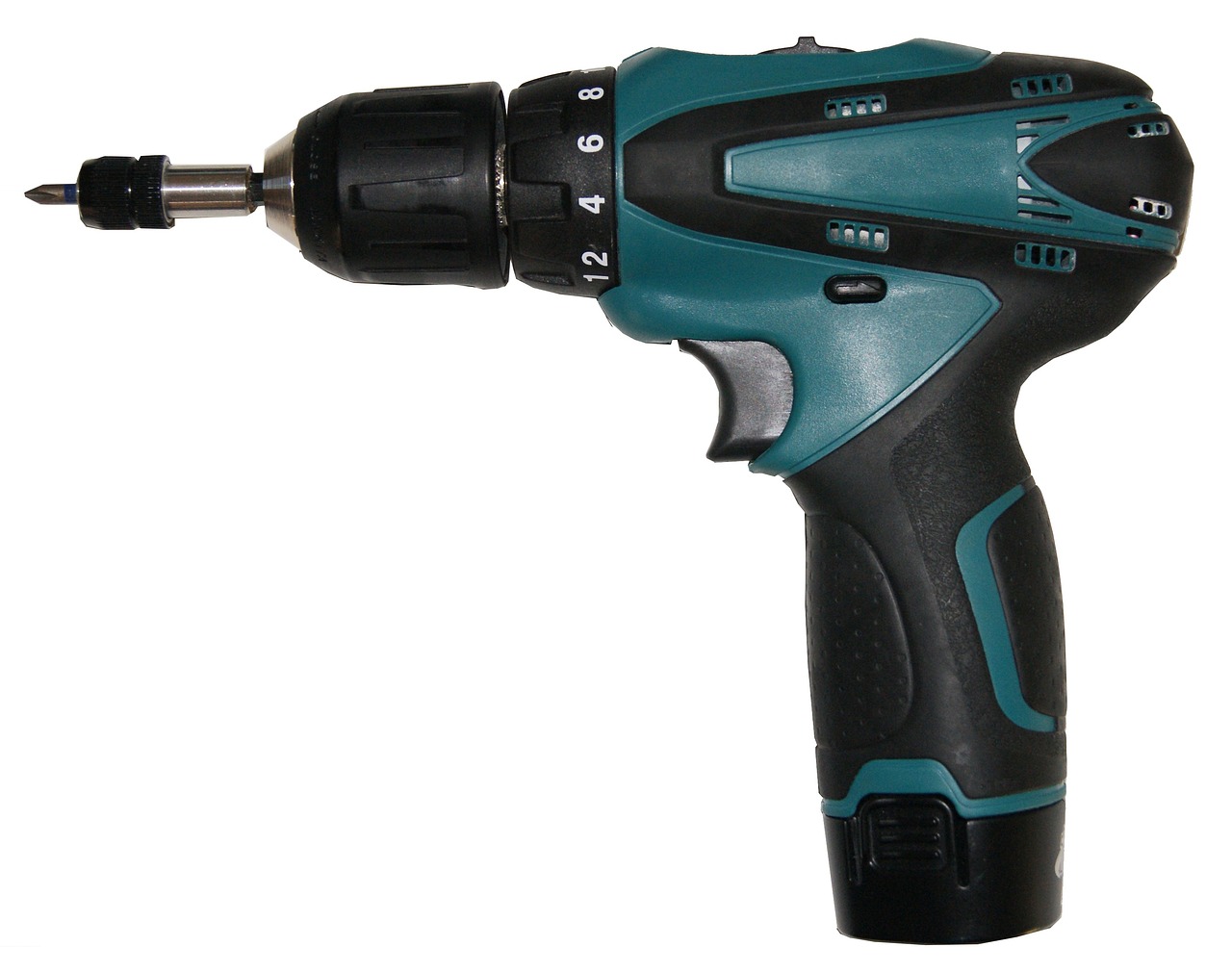
You are going to buy the drill, your life-first drill; either it is the addition to your tool kit, or you essentially require it. In this article, We will discuss the types of drills, specifications and distinct features. At Eurotech, you can find the ranges of drills and all tools that an electrician essentially requires. Tools are necessary for any technical field; without tools, any electrician and plumber is incomplete in his profession.
When you are looking for a good drill, there is a number of factors, usages, and features that should be considered. Here are a few factors that are important to consider,
- When and how much are you planning to use the drill
- Which material do you want to drill, whether it is wall, iron, wood or plastic
- Your budget is another paramount factor to be taken care seriously when selecting your next drill
Benefits of getting the right drill machine:
Any technical work requires the best tools, and a drill machine is one of them. So, the right drill is essentially required for the right job. When you have a harder surface, it saves time and makes it easier to drill within a moment. For high-surface drilling, you need the harder drill that contains a hammer function. On the other hand, a classic drill can drill wood, plastic and wall easily.
High-speed machines save time, drill accurately and produce the perfect size holes in the surface. Technicians can use drill machines and enhance the speed of the work; a decent speed with efficient work is the demand of any work.
High output is the basic need of every drill that append perfectness, neatness and accuracy in the output work as the machine era becomes advanced and efficient. Now there are automatic and radial drilling machines for greater output. Such automation tools are being used in drilling and delivering high output.
Low-cost drills have even low maintenance budgets, and this makes all the technicians happier. The long life of drill machines reduces maintenance costs, and high efficiency reduces routine maintenance. This reduces the distractions from work and causes less frustration to have to face.
Operation is easy with drill machines; these machines follow electronic principles and are easy to operate. So they easily handle all the operations associated with the drilling.
The high flexibility of the machine is another advantage of the drill machine. Nowadays, flexible machines are at the boom, and they have multiple spindles and angle base hole creation features, making them highly flexible.
Different parts of a drill machine:
As shown in the above image, there are different parts of any drill machine. That should be discussed here for in-depth details. If you already know about them or don’t want to know about the specific parts of a drill machine, then you can skip this portion and go to the next one.
- Jaws that hold the drills bits
- Chuck that contains the jaws
- Ball bearings that reduce the friction when rotating
- Sliding gears that help in moving and gaining high-speed operations
- Cooling fans are installed in a drill for the colling function
- Universal motors, either AS or DC
- Brush
- Commutator
- Bearings
- Trigger button or switch
- Lock on switch for long time drilling
- Cable clamp that makes cables tied
- The power cable that connects it with the electricity power
These are the essential parts of any drill machine. One should know them; it helps in repairing and knowing which part of the drill is damaged. Segmentation of parts and individual part working principles help engineers to repair it.
Some of the major features of drills are explained here:
- LED lights in drill machines
- Reverse function
- Drilling capacity
- Drill Bits
- Torque
- Chucks
- Variable speed
LED light function in drill:
The drill contains the ED lights that work as an indicator. Sometimes, when you are working in compact spaces, then these LED light signals talk about some indication. Sometimes, these LED lights are used for luminosity. This is good for drilling in dark places and low-light complex corners of the cupboard.
Reverse Function in the drills:
When a machine can drill in a clockwise and anti-clockwise direction, both side rotation helps in screwing and un-screw the divers. Two-way rotation also uses for the unblocking of the holes.
Drilling capacity of a machine:
Chuck holds the drill bits, and drilling capacity is the maximum capacity of the chuck to hold the drill bit. It is measured in diameter; thus, it is the diameter size that talks about the drilling capacity.
Drill Bits:
These are fit and set into the chuck and rotated during drilling. These are made up of very hard materials coated with heat-resistant material. A few of the well-known and common drills are listed here;
- Screwdrivers bits
- SDS drills
- TCT – tungsten carbide tip bits
- HSS – high-speed steel bits
Different drill bits have different purposes; some are used to screw, and others for large wooden size holes.
Torque of a drill:
This is the rotating force that a drill motor actually produces in its motion. Its measuring unit is Nm, which is the abbreviation of the newton meter. There are two conditions of torque, higher and lower torque. For heavy-duty work, higher torque is essential. On the other hand, small screws and low-power work require less amount of torque. Some of the modern drills have adjustable torque functions, and technicians adjust torque as per their requirements.
Variable speed drills:
Resolution per minute talk about the number of rotations of a motor. No load speed is the maximum RPM speed of a motor. Low-price tag drill machines have a fixed speed RPM, and high-cost tag drills have variable sped controllers. This makes it easier to control the speed of the drilling. When drilling on a hard surface, then hammer and high-speed drilling with specially coated drill bots are essentially required. On the other hand, variable speed drills can also be set to a low speed when less torque is required, like screwing a dive into the wood material.
Chucks of the drill machines:
This is the head of the drill that holds the drill bits firmly. It can be opened loose and tight for the fixing of the drill bits. There are three types of chucks for the drills:
- Keyed chucks
- Keyless chucks
- Hybrid chucks
These chucks are tightened with the use of a key, and hybrid chucks automatically tighten when the chucks rotate.
Different types of drill bits and their functions:
In order to make a hole, we always need a drill bit in addition to the drill machine. Every technician needs to understand the need and size of the drill bit.
Here are different kinds of drill bits listed below:
- Twist bit
- Spade bit
- Hole saw
- Step bit
Drill bits are made up of high carbon steel, high-speed drill, carbide-tipped, and coatings. These coatings make them heat resistant and made up of crushed diamonds and titanium.
There are different drill bits for different materials. We can say these are materials-specific. There are drill bits for metals, masonry, wood, plastic, steel, concrete, and PVC sheets.
Different kinds of drills and their specific use:
- Drill drivers
- Impact drivers
- Combi drills
- Percussion drills
- SDS drills
- Diamond core drills
- Right angle drills
- Cordless drills
- Corded drills
- Brushed motor drills
- Brushless motor drills
Drill drivers:
Drill drivers are being used for drilling holes and screwing the drives. These come without hammer functions and are good for plastic, wood and soft materials. Drill drivers contain a gearbox that contains only two slow and fast-speed gears. Fast-speed gears are good for concrete and hard materials, and slow speed is good for thin layers and screw driving. These are lightweight, low-cost, accept a range of drill bits, and are good for precise driving.
Impact drivers
The impact driver is being used for the screws, bolts and other things fastening. It has greater torque, high-level rotational features, and power to screw long-size screws even on tougher and hard surfaces. No wrist injury is an important feature, and greater torque helps them in overcoming resistance. The impact driver is good for screws and bolts and good for hard-to-reach areas.
Combi Drills:
This types of drills is used for the hammer, screw diving and hole creation. Some surfaces and masonries are very hard and require additional force. This hammer function adds value to it and makes them able to apply extra hammer lie force on the surface.
It has a gearbox with three functions, slow, high and hammer function. It contains a high-power motor that is a superpower and can be switched to any gear speed easily. This is good for metal and brick drilling.
Percussion drills:
These are also called impact drills and hammer drills. This rill has a special mechanism, a special forward hammer. This is used for masonry drilling; its structure and grip are durable and robust. It has thousands of beats per second which makes it very effective and powerful. Its hammer is always in a rotating position, and because of this, it adds no stress cracks to the surface. This makes it a neat and clean drill in the walls. If you are looking for a frustration-free drill, then it is the best drill with variable speed options.
SDS Drills:
These types of drills are also called slotted drive systems drills, another addition in the verticals of the drills. It has forward as well as backward hammer fire functions that make it more powerful. Because of their powers, they are the best and up-to-the-mark verticals and best for the drilling of concrete, masonry, and concrete. These are used for multiple functions, chiselling, drilling, and precise holing. These are also used for the removal of concrete layers from the surface, and specific drill bits are used in them. In addition to this, these are very good in power, easy to handle, good for really hard metals and brutal surface drilling, and have the capacity to drill lengthy holes or deeper holes. Furthermore, no additional pressure is required on the drill while it is operational.
Diamond core drills:
This types of drills is best for heavy-duty drilling work, as the name resembles a diamond. Everyone knows about the hardness of the diamond. These are good for the ducts, pipework, and wiring and easily make the long cylindrical holes in the concrete. This drill exerts pressure back and can be a cause of injury when working on hard surfaces. These are expensive and kickback to the user and need more stability while using this. These are good for precise holes and are powerful.
Right angle drills:
This types of drills is a right angle at the grip, and this makes it easier to make holes where it is hard to reach. Its 90-degree angle changes its use, and good for car engines, cabinets, floors and at closed areas. Its drill bits size is smaller and good for complex spaces. Sometimes technicians use them with one hand, and their small round cylindrical bodies make it easier to grip them even in one hand.
It is good for hard-to-reach spaces, has an ergonomic design, strong grip, and strong control, and is handy and good for precise drilling.
Cordless drills:
These are small-size drills with built-in battery options. Often these are chargeable, reliable and handy gadgets in this vertical. If you want to get rid of the cord, then it is the best choice for you. Next to this, if you have more work to do, then it is not a good option to carry a corded drill all the time. These are cordless, low-power, and battery-oriented drills.
Corded drills:
It is a drill with a cord, so their power is high. Contrary to the cordless, they are more powerful, so it has consistent power, produce greater torque, and are reliable, durable and high-powered drill. Similar cordless drills require time to be charged, but corded drills just need to plug the wire. No battery is required with this, consistent torque, high power, requires a power cord always and reliable drilling with a tripping hazard.
Brushed motor drills:
There are carbon bushes that touch the electromagnets and pass the electric current. Drills that contain the carbon brush are known as the brushed drills, Because of the carbon bush, these types of drills are cost-efficient, but we often need to replace and clean the carbon brush. This becomes an obstacle during work and can cause frustration.
Brushless motors drills:
These are the drills whose motors don’t include the carbon bush. Their mechanical principle is a little bit different, and it has permanent magnets. This magnet is the replacement of the carbon bushes, and this increases the life of the motor. These are more powerful than that brushless, and their efficiency is better than brushed motors. Its maintenance is less and power is high.
In this article, we have discussed the drill machines, types of drills, bits and their functions. The drill is the basic tool of every technician and plumber. Without having this, no one can make a piece hole in a hard surface.






